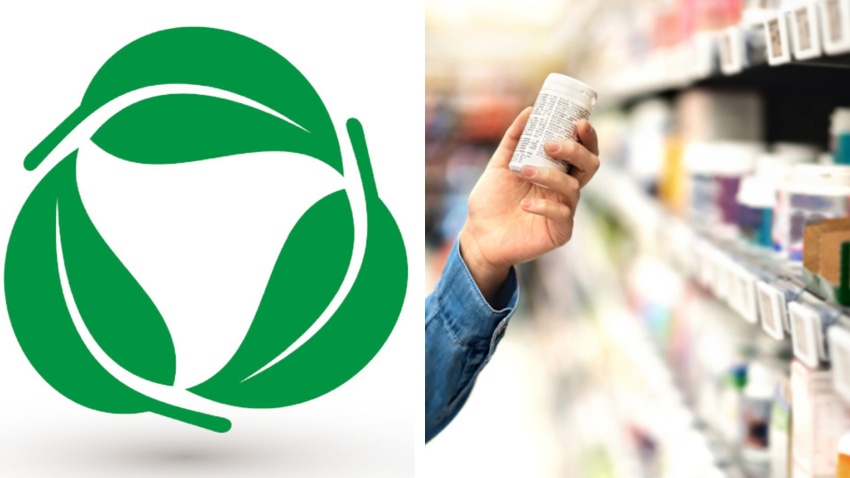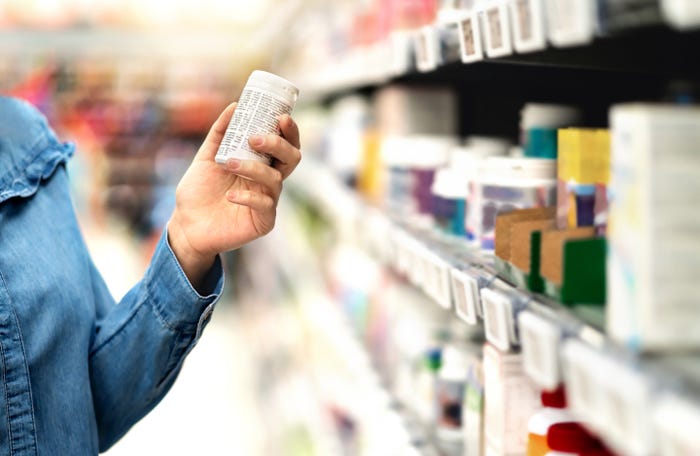Two emerging concepts hold potential as catalysts of change for tomorrow’s successful pharmaceutical packaging.

At a Glance
- Unveiling photodegradable packaging in pharmaceuticals
- Exploring Packaging-as-a-Service (PaaS) models
- Opportunities and challenges
Innovation isn’t just a buzzword in the turbulent pharmaceutical industry — it’s a lifeline. As the industry strives to satisfy changing consumer needs and regulatory restrictions, two emerging concepts are set to change how we think about packaging: photodegradable materials and Packaging as a Service (PaaS) models.
While still in their nascent phases, these concepts have enormous potential to revolutionize the pharmaceutical landscape, providing a tantalizing look into a future in which sustainability, efficiency, and agility coexist.
According to Future Market Insights, an ESOMAR-certified market intelligence firm, the global sustainable pharmaceutical packaging market is anticipated to be worth US$410 billion by 2034, expanding at a staggering 15.6% compound annual growth rate (CAGR) through 2034.
Considering the escalating burgeoning sustainability trends, the pharmaceutical sector’s eco-revolution in packaging can accelerate through these two transformative ideas.
Anatolii Kovalov / iStock via Getty Images Plus
1. Unveiling photodegradable packaging in pharmaceuticals.
Pharmaceutical packaging has historically relied heavily on non-biodegradable materials, which raises issues with waste management and the environment. Nonetheless, the tide is shifting as businesses investigate the potential of photodegradable packaging.
Let us consider a situation in which materials used for pharmaceutical packaging have the extraordinary capacity to degrade under regulated conditions upon exposure to particular light wavelengths. Photodegradable materials hold great potential; this is more than just science fiction. Progressive companies are using light to create packaging solutions that decompose into innocuous fragments, reducing their environmental effect and promoting responsible disposal. This is being accomplished via rigorous research and development.
For instance, in October 2022, Ametek Inc.’s R&D teams conducted various tests to gain experience in the degradation rates of photodegradable plastics. To do this, international standards bodies like ASTM have created laboratory and outdoor weathering test procedures.
The research highlighted that:
• ASTM D5208-14 is the standard procedure for exposing photodegradable polymers in a fluorescent UV device with UVA-340 lamps. The Atlas UVTest was the appropriate instrument for ASTM D5208-14.
ASTM D5071-08 is the standard for testing within xenon weathering chambers with the daylight filter. Unlike UVA-340-based tests, xenon chambers give the whole sun spectrum, which can help get findings compatible with natural weathering. The Atlas SUNTEST XXL+, Xenotest 440, and Ci Weather-Ometer were all appropriate for this test.
• ASTM D5272-08 is the industry standard for natural outdoor exposure. It is carried out by attaching samples to 5-degree exposure racks and allowing them to deteriorate spontaneously for a period specified by the client or the test technique. The primary advantage of outdoor testing is that the findings are real-world data points that can be used as a baseline for comparing with accelerated laboratory testing results to determine the correlation and acceleration of the laboratory test to the natural environment.
While the path to universal acceptance of photodegradable packaging in medicines is still ongoing, early indicators point to a promising future. Companies at the vanguard of this trend are adopting sustainability as a fundamental principle and developing innovative solutions that challenge industry conventions.

Tero Vesalainen / iStock via Getty Images Plus
2. Exploring Packaging-as-a-Service (PaaS) models.
The simultaneous introduction of Packaging-as-a-Service models is causing a paradigm shift in the pharmaceutical industry concerning packaging procurement and management. Packaging has often been considered a static part of the supply chain. Still, PaaS changes this by providing dynamic, on-demand packaging solutions that can be customized to meet specific demands.
Cost-effectiveness, scalability, and flexibility are the three pillars of the PaaS revolution. Pharmaceutical businesses no longer have to worry about ownership or infrastructure investments to use a range of packaging services, from design and prototyping to production and distribution. This lowers initial capital costs and allows businesses to quickly adjust to shifting market conditions and legal requirements.
Startups like Rubitel, which provides cutting-edge services that transform the partnership between pharmaceutical producers and packaging suppliers, are spearheading the use of PaaS. Rubitel is a United States-based firm that creates sensors for smart packaging. It incorporates sensors and integrated software into conventional laminates for real-time product data exchange. It enables enterprises to bypass in-house product development and shorten their time to market.
Logistics and warehousing organizations use Rubitel’s technology to improve parcel throughput and minimize truck idle periods through parcel identification. At the same time, pharmaceutical businesses profit from gathering data on temperature-sensitive drugs, which helps them prevent denaturation, tampering, and low-cost readers.
Synergies and opportunities abound.
The juxtaposition of photodegradable packaging and PaaS models creates a compelling synergy that has the potential to drastically alter the future of pharmaceutical packaging despite their apparent differences. Imagine a world in which PaaS providers are used by pharmaceutical firms to improve the packaging lifecycle and to include sustainable materials into their designs seamlessly.
Numerous advantages, including improved environmental stewardship, simpler operations, and cost savings, are made possible by this mutually beneficial partnership. Pharmaceutical businesses can foster innovation and differentiation in an aggressive market by integrating PaaS models and photodegradable packaging alongside their sustainability aims.
Challenges and considerations.
Of course, there are obstacles to the broad use of photodegradable packaging and PaaS models. A few obstacles businesses must overcome on their path to efficiency and sustainability are industry stagnation, technology constraints, and regulatory compliance.
Furthermore, corporate culture and mentality change are necessary to leap from conventional packaging paradigms to innovative ones. Successful implementation requires staff training, change management activities, and stakeholder buy-in to ensure that the advantages of innovation are realized throughout the whole value chain.
Catalysts of change for tomorrow’s success.
The prospects of Packaging-as-a-Service and photodegradable materials are promising routes for innovation and progress in the endeavor to reinvent pharmaceutical packaging for the 21st century. Though they are still in the early phases of adoption, these concepts have the potential to revolutionize the industry and provide a glimpse of a seamless future where sustainability, efficiency, and agility thrive.
Collaboration, experimentation, and visionary thinking will be the hallmarks of success as businesses continue to investigate the possibilities of photodegradable packaging and PaaS models. By adopting these new approaches, pharmaceutical firms can confront the present difficulties and create a more sustainable and optimistic future for future generations.
About the Author(s)
You May Also Like




